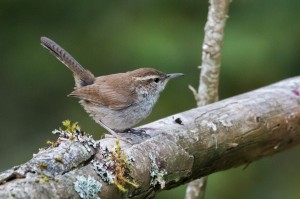If you’ve known me for a few years previous to this blog post, you’ll know that this whole birding and photography hobby is actually relatively new. In fact, getting into it was something of an accident: in September of 2013 I purchased my first DSLR. Originally I’d gotten it because I’d just left my job and was taking a several month break before looking for a new position. I’d also just adopted the second of my two parrots, and really wasn’t satisfied with the photos I was able to take with either my smartphone (at the time and still as of this writing the excellent HTC One) or an older Panasonic Lumix.
It didn’t take long for me to realize that I really enjoyed taking pictures, not just of my parrots, but of everything around me. One thing I realized rather quickly though was that with the lenses I had–the kit lens, a Nikon 18-55mm, and a fast prime, the excellent and cheap Nikon 35mm f/1.8G–were completely hopeless at any pictures of wildlife, particularly smaller animals. Curious about what it would be like to go birding (and probably inspired by the very fun Steve Martin/Jack Black movie The Big Year, though this might be a chicken-and-egg situation), by October I’d begun renting long telephoto lenses (such as the amazing and hideously-expensive Nikon 300mm f/2.8 VRII) to take pictures of birds with from a great local Seattle business, Glazer’s.
A year later, and I’m actually using the same camera body I started out with, the Nikon D3200, and a super-telephoto zoom lens from Sigma, the now-discontinued 120-400mm f/4.5-5.6. Those of you familiar with Nikon DSLRs will know that the D3200 is the most entry-level DSLR they sell. Or sold, rather: you can find the newer (though nearly identical) D3300 with a kit lens on deals for less than $400 as of this writing.
So what’s changed?
- The way I listen and watch when I’m outside. Doesn’t matter if I’m birding or not: I notice every chirp, squawk, or song. My eyes catch every small, quick movement in trees and bushes, and I look at birds flying overhead long enough to attempt to identify them. Hiking is no longer just following a trail to get to the end, it’s a constant search for birds while I walk (and to be honest, any wildlife at all). I feel more aware of my surroundings.
- The things I look for when I travel. Whether a camping trip to the Yakima River Canyon or a week in Paris, now I’m looking up all the best places to look for birds–trails, parks, wildlife areas–before I go, looking up the species I can expect to find, and even doing research on those species I find most interesting and would like to find (to give me a better chance at finding them when I get there).
- My travel goals often are created primarily because of access to areas with birds. In fact, the way I decide on where I’d like to go has completely changed. A few years ago when I thought of where I wanted to travel I’d think of various big cities in Europe and South America. Now I’m looking at places I can go hiking in the rainforest, wetlands, or other places where I can spend time looking for and taking pictures of birds. It should also come as no surprise that plenty of my travel plans are centered around sailing, but even then I’m looking at what sort of avian life there is to find in the area.
- I’ve even combined my interests of birding and sailing, keeping lists of remote islands with endemic species. I may not get to these places in the next few years, but someday I’d really love to be able to sail to these remote places and get photos of some of those rare and endangered species; species for whom photographs (especially sharp, high resolution photographs using modern equipment) are lacking or nonexistent.
In my case, birding is inexorably entwined with photography. I don’t currently even own binoculars or a spotting scope (though I’m looking into purchasing some good binoculars soon), using instead the telephoto lens I lug around attached to my camera as my only optics. This isn’t the case for most of the birders I’ve met at all–usually even the ones who are doing photography are carrying around binoculars, with their camera and lens sitting on a tripod. I don’t like dealing with tripods, or even monopods: I’m running around handholding nearly all of my shots. I have to deal with muscle fatigue in my arms, but it also gives me a lot more freedom and speed to react to what is happening around me.
I could say that birding has also changed how I do photography, but I think it would be more accurate to say that it has evolved my photography–this entire past year has been a learning experience on multiple fronts: sailing, birding, and photography. I’ve spent a significant amount of time shooting, editing, and even researching the type equipment I’m looking at purchasing to help up my game. I’ll explore that topic at a later date but for now the best way to put it is this: a year ago when I would get good shots it was as much on accident as anything else. Now when I get good shots it’s because I understand the equipment, understand the lighting around me, and have put myself in the right place at the right time.
It’s often said that the only way to really learn something is to do it over and over and over again. When it’s something you love, doing it over and over again is fun. I’ve had more fun in the past year than any other time in my life.

